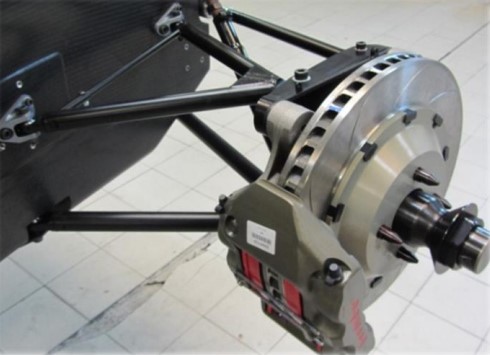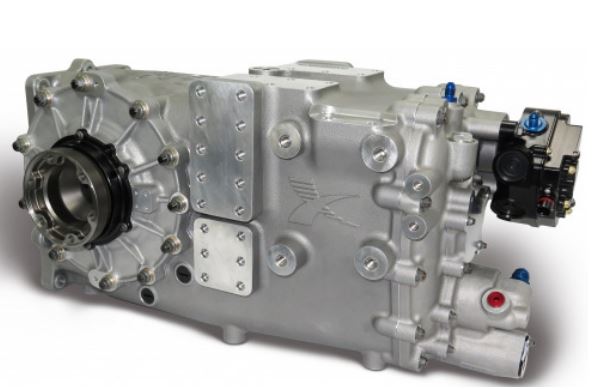One of the great sensations of the 2022 season of Império Endurance Brasil was the arrival of the Ligier JSP320 from the BTZ Motorsport team, driven by Guilherme Bottura and Gaetano di Mauro, which we will get to know in today’s publication.
Historic
But before focusing on the “Track Day Edition” configuration, let’s first learn about the history of Ligier and LMP3. In 2013, the ACO created LMP3 as an entry point for prototypes in endurance racing, replacing the Oreca Formula Le Mans in the ELMS (European Le Mans Series) and the CN Group prototypes in the ALMS (Asian Le Mans Series). Five manufacturers homologated cars for the new category: Ginetta-Juno (P3-15), Ligier (JSP3), Norma (M30), Adess (03) and Ave-Riley (AR-02). All cars had in common that they had to have a closed cockpit and use a standard 420 HP Nissan VK50 V8 engine, prepared and equalized by Oreca.
At the start of the 2015 season, only Ginetta managed to get its prototype ready for competition, taking the inaugural ELMS title. Meanwhile, Ligier used the extra time to develop the JS P3, transforming the French prototype into the dominant car in LMP3. In fact, the JS P3 was the last project overseen by Guy Ligier, being produced by Onroak Automotive, which took over the operation of the legendary French brand after Ligier’s retirement.

And by dominance, we are talking about massive dominance with 93 victories in 140 races valid for the main championships for prototypes such as the European Le Mans Series, Asian Le Mans Series, V de V Endurance Series, Le Mans Cup, IMSA Prototype Challenge and the English and Chinese championships for LMP3 prototypes.
In 2018, the ACO announced plans for an updated technical specification for LMP3 prototypes from 2020 onwards, including the adoption of a new engine (Nissan VK56 V8, with 35 hp more than the previous engine) and the adoption of traction control. The same manufacturers initially homologated were retained for the second generation of LMP3, and the cars were to be designed so that a Gen1 car could be upgraded with the purchase of a kit made available by the manufacturers, at a pre-determined cost.
Ligier took the opportunity to review 95% of the JS P3’s bodywork, which was known for having a better contour but lower top speed than other LMP3s. This gave rise to the JS P320 specification, which expanded the French car’s dominance by winning championships in Europe, Asia and the United States, including victories in iconic races such as the 24 Hours of Daytona (2021/22), 12 Hours of Sebring (2021/22) and Petit Le Mans (2021/22).

Note: The above tally includes the following championships and events: IMSA WeatherTech Endurance Championship (2021-22), IMSA Prototype Challenge (2017-22), European Le Mans Series (2015-22), Le Mans Cup (2016-22), Asian Le Mans Series (2016-22), V de V Endurance Challenge (2017-19), 24H Proto Series (2017-18), Ultimate Cup Series (2020-22), British Prototype Cup (2016-18), Chinese Prototype Cup (2017-18), Prototype Cup Germany (2022), 25 Hours of Thunderhill.
JS P320 in Brazil
In 2022, the JS P320 also arrived at Endurance Brasil, in a configuration called “Track Day Edition”. In relation to the homologated LMP3 car, this version does not use restrictors so that the engine produces 525 HP, in addition to being equipped with ABS (prohibited in LMP3 championships). The arrival was marked by the victory in the debut race, held in Goiânia, demonstrating the potential of a car that had recently been cleared by customs and was not even plotted for the race. During the season, the BTZ team of Guilherme Bottura and Gaetano di Mauro proved to be extremely competitive in all stages, but a series of incidents (a broken steering box in Interlagos, an accident at the start of the race in Santa Cruz do Sul, a ruptured cooling system hose in Velocittà) took the team out of the running for the P1 category title. Another victory followed in the fifth stage, held again in Goiânia, but problems returned to haunt the team in the following stages, relegating the Bottura/Di Mauro duo to eighth place in the P1 class classification table.

Part 1 – Chassis
The chassis of the Ligier JSP3 20 is a carry-over of the original JSP3, manufactured by Italy’s HP Composites and approved in crash tests by the FIA. The construction is hybrid, with a carbon fiber tub and an integrated tubular roll cage, unlike its larger brothers in the LMP2 and LMP1 categories.


Complementing the safety package, there is a carbon fiber crash box at the front.

The front suspension is of the Pushrod type, with 4-way adjustable Ohlins TTX40 shock absorbers (1), third element (2) and adjustable stabilizer bar (3).

The rear suspension is also a pushrod type with Xtrac transaxle mounting points (4), Ohlins TTX40 4-way adjustable shock absorbers, third element (5) and adjustable stabilizer bar (6).

The brakes are from the Italian Brembo with 14” (355.6 mm) diameter steel discs and 6 pistons on all four wheels and the car uses Oz 18” wheels with fast hubs, with a 12.5” width at the front and 13” at the rear.

Part 2 – Powertrain
In the first generation, all LMP3s were required to be equipped with Nissan VK50 V8 engines, developed specifically for the category based on the engines used in the Nissan QX70.

In street configuration, the 5,026 cm³ engine already delivers 395 hp / 500 N.m, so for the competition engine Oreca chose to maintain several original production components such as: block, connecting rods, crankshaft, pistons and cylinder head. With a new valve train and intake and exhaust system optimized for high performance, the competition VK50 produces 520 HP without restrictors (420 HP with the mandatory restrictors of the FIA LMP3 regulations).

The transmission is a P1152 transaxle from the British company Xtrac, developed specifically for the LMP3 category, with 6 gears and sequential changes via paddle shift.
Part 3 – Aerodynamics

The aerodynamics of the JSP320 are quite limited in terms of available resources, a contrast to the Brazilian P1 prototypes. At the front, the main aerodynamic element is the central splitter (1), to which are added two diveplanes (2) in each wheel well. The air intakes for the front brakes are close to the nose (3), with the rectangular air intake on the roof (4) and the cockpit is ventilated through a large inlet under the windshield (5), with pipes integrated into the cockpit:


The engine cooling air is fet through two intakes (6) positioned on the front bodywork. As required by LMP3 regulations, the wheel arches are ventilated via Big Honking Holes at the front (7) and rear (9), and the JSP320 also features the ubiquitous dorsal fin (8). The rear wing (10) has 2 elements and a swan neck support.

In the profile we can also see the aerodynamic work on the air outlet that passes through the front section (11) and the air intake for the rear brakes (12), in addition to the cockpit ventilation outlet (13).

At the rear, the wheel arches have strakes (14) to help direct the airflow, and a sort of gurney (15) positioned on the fairing. The standard LMP3 diffuser (16) is small in size compared to the P1, limited on the sides by the cheese wedges (17), where the brake and rain lights are located.
You may also be interested in:

Ginetta G57 P2 / G58 (2019 – )
Developed in England by Ginetta, the G57 P2 prototype arrived in Brazil by the team of brothers Fábio and Wagner Ebrahim, and has since established itself as one of the fastest cars in Endurance Brazil.

Metalmoro JLM AJR (2017 – )
Currently the fastest prototype in the country, the AJR was developed by JLM Racing, and since its debut on the tracks it has been the fastest competition car in the country, currently holding the record for national cars at Interlagos and the overall record for all racetracks where it has competed.
Sources:
Ligier JS P3. Available at: https://ligierautomotive.com/vehicules/sport-prototype/ligier-js-p3/.
Ligier JS P320. Available at: https://ligierautomotive.com/vehicules/sport-prototype/ligier-js-p320/.
2022 Technical Regulations for LMP3 Prototypes. Available at: https://www.imsa.com/wp-content/uploads/sites/32/2022/06/15/LMP32022TECHNICALREGULATIONSV17031221Clean.pdf.
2016 Ligier LMP3 JS P3. Available at: https://racecarsdirect.com/Advert/Details/81687/2016-ligier-lmp3-jsp3-189000.
Ligier JS P320 LMP3 – New Car Available. Available at: https://racecarsdirect.com/Advert/Details/126351/ligier-js-p320-lmp3-new-car—available-immed.
Racing Engine. Disponível em: https://www.nismo.co.jp/en/products/customerracing/engine.html.
P1152 LONGITUDINAL SPORTSCAR TRANSAXLE. Available at: https://www.xtrac.com/product/p1152-longitudinal-sportscar-transaxle/.
Onroak Automotive Ligier JS P3 User Manual V1.0 A- Introduction.
Onroak Automotive Ligier JS P3 User Manual V1.0 B- Chassis.
Onroak Automotive Ligier JS P3 User Manual V1.0 C- Engine.
Onroak Automotive Ligier JS P3 User Manual V1.0 D- Gearbox.
Onroak Automotive Ligier JS P3 User Manual V1.0 E- Brake and Clutch.
Onroak Automotive Ligier JS P3 User Manual V1.0 F- Dampers.
Images
[1]: Sourced from: https://ligierautomotive.com/en/company/history/.
[2]: Sourced from: https://ligierautomotive.com/vehicules/sport-prototype/ligier-js-p320/#slide-gallery/slide-2.
[3]: Sourced from: https://www.facebook.com/photo/?fbid=255258777262499&set=a.249862601135450.
[4]: Adapted from: Onroak Automotive Ligier JS P3 User Manual V1.0 B- Chassis.
[5]: Adapted from: Onroak Automotive Ligier JS P3 User Manual V1.0 E- Brake and Clutch.
[6]: Sourced from: Racing Engine. Disponível em: https://www.nismo.co.jp/en/products/customerracing/engine.html.
[7]: Sourced from: P1152 LONGITUDINAL SPORTSCAR TRANSAXLE. Disponível em: https://www.xtrac.com/product/p1152-longitudinal-sportscar-transaxle/.
[8]: Adapted from: Ligier JS P320 LMP3 – New Car Available. Disponível em: https://racecarsdirect.com/Advert/Details/126351/ligier-js-p320-lmp3-new-car—available-immed.

